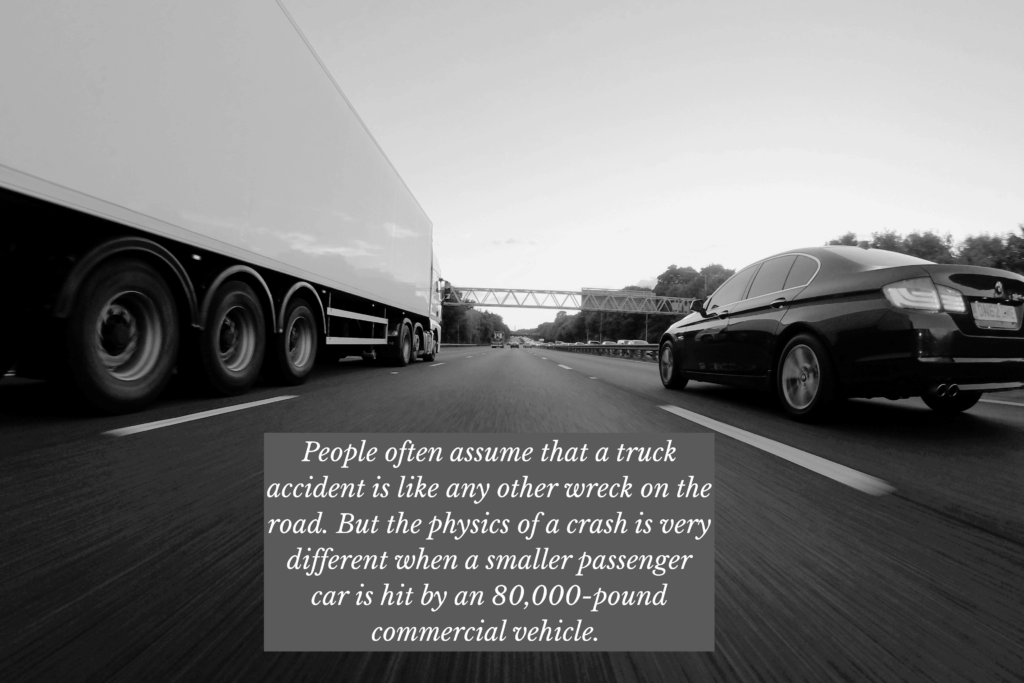When you’re involved in a serious truck accident, the aftermath can be overwhelming. The physical injuries, the fear, the confusion…it all hits at once. On top of medical decisions and insurance stress, you’re left wondering: How could this have happened? Was the truck driver tired or distracted? Maybe they shouldn’t have been on the road at all? If so, how do you prove it?
At Kane Personal Injury, we help New Mexico families find answers—and we often find them in a surprising place: the truck’s black box and telematics data. These hidden systems record everything, from speed and braking to driver hours and location history. In cases involving driver fatigue or HOS violations (Hours of Service), this data can be the key to justice.
What Is a Truck Black Box? And What Exactly Does It Record?
Modern commercial trucks are equipped with Electronic Control Modules (ECMs) or Event Data Recorders (EDRs), commonly called truck black boxes. These systems continuously capture data from the truck’s operation, including:
- Speed at the time of impact
- Sudden braking or acceleration
- Engine RPMs and throttle position
- Steering input and lane movements
- Use of cruise control or anti-lock brakes
This data is crucial in truck accident injury cases because it provides an objective record of what happened—often more reliable than driver statements or eyewitness accounts.
Telematics Data and HOS Violations: Exposing Driver Fatigue
In addition to the black box, many commercial fleets use telematics systems that provide real-time vehicle tracking, electronic driver logs, and alerts for unsafe driving behavior. This telematics data can show, for example, how many hours a driver was on the road (also called HOS tracking) and whether the driver took the required rest breaks. Other data can show GPS routes and timestamps, with information that is precise enough to show if the driver had been swerving or breaking harshly—both signs of fatigue.
This information is critical in proving HOS violations, which are regulated by the Federal Motor Carrier Safety Administration (FMCSA) to prevent fatigue-related crashes. Even though truck drivers are limited to 11 hours of driving after 10 consecutive hours off duty, violations are common, especially on long-haul routes like I-10 and I-25 in New Mexico. When drivers ignore these limits or falsify their logs, innocent people pay the price.
Truck Accidents Are a Special Kind of Case…and You Can Feel It
People often assume that a truck accident is like any other wreck on the road. But the physics of a crash is very different when a smaller passenger car is hit by an 80,000-pound commercial vehicle. Thus, car accidents and truck accidents have to be handled differently. Often, this means that:
The type of accident might be different. Accidents with trucks can involve underride, for example, which have different patterns of damage and evidence.
The smaller vehicle takes the brunt. Momentum is not distributed equally in an accident. The amount of momentum is inversely proportional to the size of the vehicle. So, in an accident, a truck might barely have a scratch while the smaller car colliding with it gets totalled. If you’re the one in the smaller car, you will feel it.
The injuries can be much more severe. Accidents with trucks are much more likely to involve spinal injury, brain injury, broken bones, and other serious conditions. They are also more likely to bring on “mental” injuries such as PTSD, anxiety, and nightmares.
Liability might be proved differently. The vast majority of truckers are well trained and perform their job safely. But the reason such training is needed is because there are many ways in which a truck driver might lose control and cause an accident. These causes can be established, if you know what you are looking for.
These kinds of accidents can be devastating. Which means that your injury case is not just about getting compensation. You need the truth about what happened…and someone who knows how to fight for it.

Why Preserving Truck Data Is So Important—and Time Sensitive
Most people don’t know that black box and telematics data can be deleted within days if not preserved quickly. That’s why it is important to act fast. Your attorney should send spoliation letters immediately, which legally require the trucking company to preserve this evidence. Having this data can help us prove negligence when trucking companies try to avoid accountability.
Of course, the details of the case matter. But in past cases, telematic data has helped victims of accidents and their attorneys:
- Prove a truck driver was on the road too long
- Show erratic driving patterns before the crash
- Reveal how a crash unfolded second-by-second
- Hold a trucking company accountable when it failed to monitor its drivers
For example, companies like Geotab and Samsara provide real-time tracking and driver behavior reports to major trucking fleets. If these systems flag fatigue or unsafe practices—and the company ignores them—they may be liable, too.
Talk to a Law Firm That Knows How to Uncover the Truth
Truck accident injury cases are not simple. They require experience, resources, and a deep understanding of how to uncover and use data that the trucking companies would rather keep quiet.
At Kane Personal Injury, we’ve handled serious truck crashes across Southern New Mexico and know what it takes to build a strong case. If you or a loved one has been hurt in a truck accident, don’t wait to get help.
Call us today for a free consultation. We’ll explain your options, protect your rights, and make sure critical data is preserved before it’s lost.
